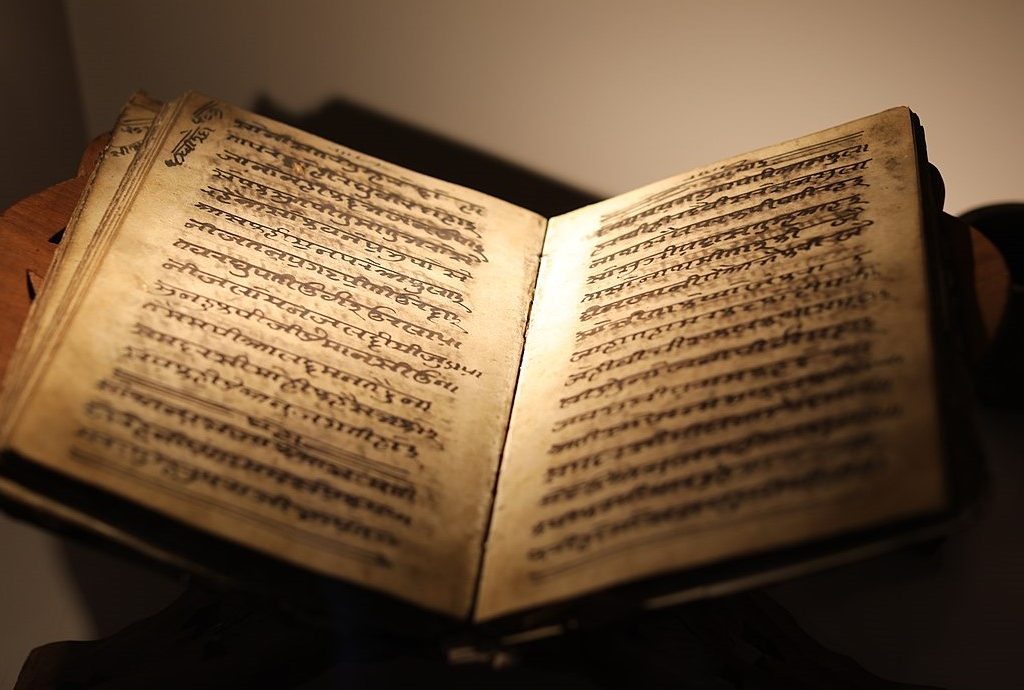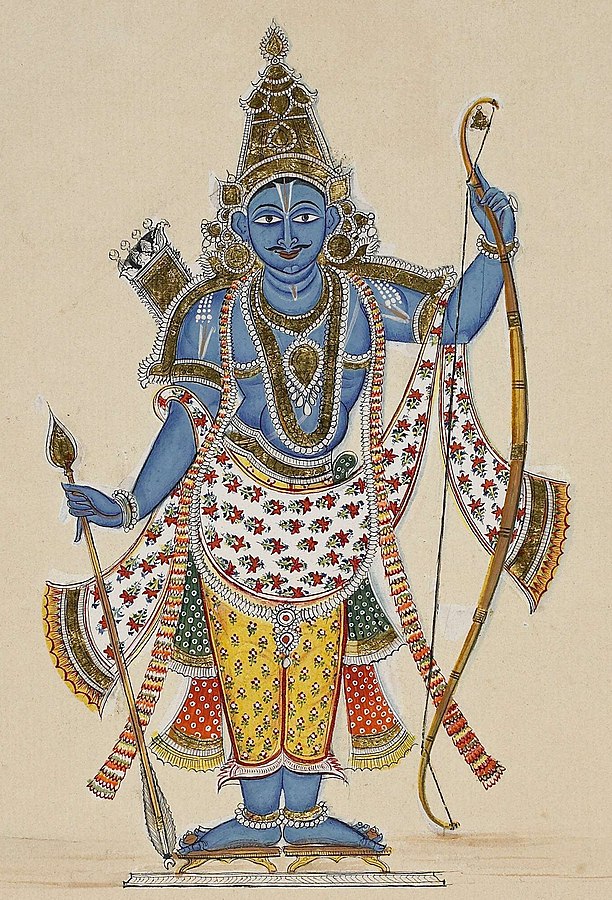By Piyush Kukrety

Several immortal works have been produced in the Indian literary tradition, whose legacy continues to thrive even in the modern times. However, if there is a single text which has captured the imagination of scholars, poets and critics alike, across the length and breadth of the subcontinent: it has to be the Ramayana. Hearing and re-hearing the story of Ayodhya’s prince is an activity that has captured the fascination of young and old- a fact corroborated in contemporary times by the extremely successful re-run of Ramanand Sagar’s magnum opus during the Coronavirus lockdown. There have been several scholarly works which explore the Ramayana’s popularity and versatility. These works point towards the fact that over time, different authors have taken the liberty of incorporating different narratives, all of which have been instrumental in shaping regional perceptions of the story and characters. The narrative which is adopted by a particular author is also influenced to great degree by what he seeks to emphasize. Tulsidas’s Ramcharitmanas for example seeks to put forward the idea of Ram as blemish-less and fault-free, to whom lay individuals can look up to as their ideal. Not only Ram, but also the individuals immediately associated with him (particularly his family members) are embodiments of perfection and great virtues. It is therefore inconceivable, as per Tulsidas, for Ram to falter at any given point of time. The broad narrative, however, recounts several instances in which Ram actually does falter, and is compelled to utter painful and harsh words (for example, ordering Sita to undergo the fire ordeal). Tulsidas very cleverly maneuvers the narrative here, and simply glosses over Ram’s words, or attributes them to someone else. One sees something similar in the Jain narratives of the Ramayana too. Owing to the overriding emphasis on Ahimsa, it is unthinkable for the protagonist of the epic to actually undertake the violent act of killing Ravana. Hence, in the Jaina narratives one finds the final act of killing the demon king as being undertaken by Lakshman. All of these observations point towards the immense diversity and flexibility that characterizes narrative traditions of the Ramayana.
Among these different versions of the epic which look at the narrative from varying standpoints, is one tradition which emphasizes Ram’s absolute divinity. This is the Adhyatma Ramayana, which is a part of the Brahmanda Purana. In traditional compendiums of Puranic literature, the Brahmanda Purana is often considered to be one of the oldest texts, and is known for cutting across sectarian traditions. Puranic myths are usually centered around one deity being conceived as Supreme (which is either Vishnu, Shiva or Devi). This supremacy of a particular deity is a running theme of the entire narrative of the text. The Brahmanda Purana is different in this sense, as it encompasses narratives of different deities being seen as Supreme. For instance, apart from the Adhyatma Ramayana, the Brahmanda Purana also includes one of the most significant works in medieval Shakta literature- the Lalitopkhyana (Lalita+Upakhyana- ‘the glory of Goddess Lalita’). Within this section of the Purana, it is the Goddess who reigns supreme and is visualized as the essence that creates, sustains, destroys and enlivens the cosmos. The Lalita Sahasranama, which is part of the Lalitopkhyana enumerates the 1000 names of the Goddess, and is an important part of Shakta religious observance, even in contemporary times.

Drawing attention back to the Adhyatma Ramayana, it is important to note that Rama’s divinity is the binding theme of the entire narrative. In response to the prayers of Mother Earth and the various demigods, Vishnu descends into the mortal world as Ramachandra to destroy the evil King of Lanka. Scholars have noted, according to Valmiki (the author of the principal Sanskrit version of the text) Ram is barely aware of his divine nature, and is in fact made conscious of it towards the end of his time on earth. On the other hand, this divinity is always borne in mind by the Ram of the Adhyatma Ramayana. Not only is he aware of it, but he also professes it openly. One of the most striking instances from the text is the moment of Ram’s birth. As soon as he slips out from his mother’s womb, Ram assumes the form of a four-armed Vishnu and makes it evident to her that he is God himself, manifest in human form on earth. Later in the epic one finds similar narratives. Right before his banishment into the forest for fourteen years, Ram is visited by his preceptor- Vasishtha. Vasishtha is not an ordinary Brahmin, and is believed to be one of the seven mind-born Rishi sons (Saptarishis) of Brahma. Ram has undertaken his entire education under the watchful eye of Vasishtha, and accords him the respect which any ideal Kshatriya student would to his Guru. Vasishtha however, despite being served by Ram for all of these years, now asks him as to why should He (Ram, in his capacity as the Supreme Vishnu) orchestrate actions like any other mere mortal. To this, Ram replies by citing his role as an ideal figure for humankind. He recounts, that apart from killing Ravana, the purpose of his incarnation on earth is to set moral standards which humanity should strive for. By serving Vasishtha in a particular manner, Ram is thus, setting the benchmark for an ideal attitude towards the Guru.
Apart from these instances in which Ram himself confesses his divinity, there are other ways in which this is asserted in the Adhyatma Ramayana. The narrative includes several hymns or ‘Stutis’ rendered by various demigods, rishis and other lay individuals in honour of Ram at different instances. A common theme which binds all of these laudatory poems is the conception of Ram as the infallible, singular reality, who out of his immense compassion, chooses to live like a mere mortal. There was never a time when he did not exist, and there would never be a time when he won’t be there. In this sense, Ram is not just an Avatar, who is bound by the cosmic maneuverings of celestial time. He is not a historical figure who arrived at a particular time, fulfilled the purpose of his incarnation, and subsequently returned to his celestial abode. Over and above this, he is an enlivening presence that is eternal, omniscient and omnipotent. This is a seminal idea, because this is the first instance in which Ram’s identity transcends the confines of being merely a heroic character and assumes the form of manifest divinity itself.
The Adhyatma Ramayana served as an inspiration for several later versions of the text, which emerged in the medieval period. Tulsidas’s Ramcharitmanas is one among these, and is today undoubtedly the most-read and professed version of the epic across North India. It has been pointed out that several important narratives which Tulsidas incorporates, such as the assumption of a ‘fire body’ by Sita before her abduction, the Agni-Pariksha acting as an exchange between the real and the ‘shadow Sita’, the deliverance of Ahalya, the liberation of Shabari and the acts of Ram as a spiritual guide delivering insightful sermons, are all major borrowings from the Adhyatma Ramayana narrative. The reason why Tulsidas’s version gained such wide readership was undoubtedly because of its language, which was easily understood by a large section of society. Tulidas’s Ramcharitmanas was also instrumental in the development of Ayodhya (in the modern day Faizabad district of Uttar Pradesh) as an important site of pilgrimage. In subsequent times, the Adhyatma Ramayana also inspired other regional authors such as Ezhuthuchan in Kerala.
It can therefore be said that the Ramayana narrative which is popular among a major portion of the Indian populace, in contemporary times, is actually a product of intellectual speculation which was triggered as a part of the Upanishadic discourse of the Later Vedic period. This discourse has enabled Ram to be seen as a figure who cannot be confined to a particular space or region. Obviously, if Ram’s divinity can be taken back to the Supreme Absolute, there is no question of him being restrained to particular cultural zones. In subsequent times, Ram’s worship became prevalent across the subcontinent, going as far south to the land which was once supposedly visited by him- Lanka. By the 15th century, devotional traditions built around Ram were not restricted to North India alone. Individuals like Bhadrachala Ramadasa in Andhra Pradesh lent a new musical identity to Ram Bhakti. In later times, Ram became instrumental in shaping the Carnatic Classical music tradition, as he was the devotional center of great composers like Tyagaraja. In a way it can thus be said, that the narrative of the Adhyatma Ramayana and of associated versions of the text lent a new form of dynamism to devotionalism centred around Ram, and enabled it to transcend linguistic and social barriers. In contemporary times, it is this message of unity which needs to resurface. Ram needs to be imagined not as an entity which divides individuals, but as a force that fosters brotherhood among them. All that exists is Ram. Where then, is the difference between you and me?

